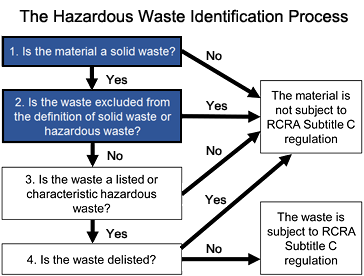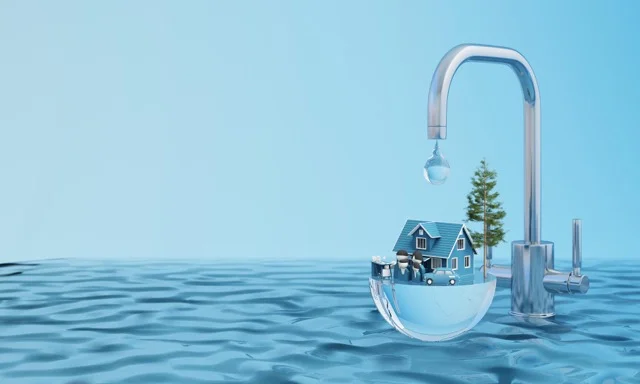Reclaim Waste Things To Know Before You Buy
Excitement About Reclaim Waste
Table of ContentsWhat Does Reclaim Waste Do?Reclaim Waste Things To Know Before You BuyGetting My Reclaim Waste To WorkAll About Reclaim WasteThe Definitive Guide for Reclaim Waste
Discover the types, incidents, and types of liquid waste. Domestic sewage waste refers to the waste and products from a property sewage-disposal tank. This sort of waste is created by people in houses, schools, and various other buildings. This only consists of septic tanks that have a drain field. The appropriate management and disposal of residential sewer waste need liquid waste to be moved to a sewer therapy plant where the correct methods and devices are put on purify and throw away waste.
Commercial waste commonly includes possible threats, such as flammable products or a mixture of fluid and strong waste items, and calls for a much more sophisticated and comprehensive disposal procedure. The disposal of business waste generally entails the filtering of waste before transport to make certain secure and proper disposal. Industrial waste is developed from by-products and overflow of industrial processes and production.
This sort of waste can not make use of the very same sewage administration transport or procedures as septic or commercial liquids. The industrial waste monitoring procedure calls for the inspection and testing of liquid waste before it undergoes the disposal process (liquid waste removal). Overflow waste is the fluid waste that originates from overflow and excess stormwater in extremely inhabited areas or cities
Runoff waste can create contamination and flooding otherwise taken care of properly. Learn more concerning sewage system cleansing and waste monitoring. Making certain correct waste monitoring can stop catastrophes and minimize environmental harm. Both people in property settings and professionals in commercial or manufacturing markets can take advantage of understanding the procedures and guidelines of liquid waste management.
Some Known Facts About Reclaim Waste.
Call PROS Solutions today to learn more about our waste monitoring and disposal services and the appropriate means to care for the liquid waste you generate.
(https://www.tripadvisor.in/Profile/reclaimwaste1)Do you understand what happens to your water when you draw the plug, flush the commode or drain pipes the washing equipment? No? Well, it's worth recognizing. This so-called 'wastewater' is not just a crucial resource however, after treatment, will certainly be released to our land, waterways or the sea. Utilized water from commodes, showers, baths, cooking area sinks, washings and industrial processes is understood as wastewater.

water utilized to cool down machinery or clean plant and tools). Stormwater, a form of wastewater, is drainage that moves from agricultural and city areas such as roof coverings, parks, gardens, roadways, paths and rain gutters right into stormwater drains pipes, after rain. Stormwater streams untreated directly to regional creeks or rivers, at some point reaching the ocean.
Not known Details About Reclaim Waste
In Queensland, most wastewater is treated at sewage treatment plants. Wastewater is delivered from residential or commercial websites via a system of sewage systems and pump terminals, referred to as sewerage reticulation, to a sewer treatment plant. City governments construct, keep and run most sewer treatment plants. Operators are certified under the Environmental Security Act 1994 to discharge treated wastewater at an acceptable environmental standard right into rivers.
The Division of Natural Resources encourages city governments about handling, operating and preserving sewerage systems and therapy plants. In unsewered locations, regional governments might call for homeowners to install specific or family sewage treatment systems to deal with residential wastewater from toilets, kitchens, bathrooms and washings. The Department of Natural Resources authorizes using household systems when they learn the facts here now are confirmed to be reliable.
In some new subdivisions, therapy of some stormwater to eliminate litter, sand and crushed rock has started using gross toxin traps. Wastewater therapy occurs in 4 stages: Eliminates solid matter.
Wastewater after that streams right into large storage tanks where solids resolve and are removed as sludge. Grease and residue are skimmed from the surface. Makes use of tiny living organisms called micro-organisms to break down and eliminate continuing to be dissolved wastes and fine bits. Micro-organisms and wastes are included in the sludge. Removes nitrogen and phosphorus nutrients that might create algal blooms in our waterways and endanger marine life.
The 4-Minute Rule for Reclaim Waste
Nutrient removal is not available in all sewer treatment plants since it needs costly specialised equipment. It is becoming more usual in Queensland. Clear fluid effluent generated after therapy may still contain disease-causing micro-organisms. If this effluent is released right into rivers such as rivers or the sea, the micro-organisms will ultimately die out.

Most wastewater moves into the sewage system. Under the Act, local federal governments carry out approvals and permits for ecologically pertinent activities (Periods) including wastewater launches that might have a neighborhood impact.
Some Known Facts About Reclaim Waste.
Or else, samples are taken for lab evaluation. Frequently lots of examinations are required to establish the levels of each of the different toxins such as oils, hefty steels and chemicals in water. Monitoring offers accurate info regarding water top quality and can confirm that licence conditions are being satisfied. The info acquired via surveillance provides the basis for making water high quality choices.